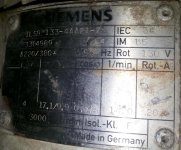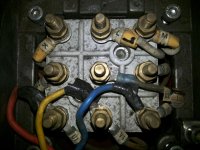info motor
- Thread starter osmanmom
- Start date
Similar Topics
So quick overview. We have several motion axis throughout a system. All are on Ultra 3000 drives using N-3412-2-H motors....that's the catalog...
Anyone know what these statistics mean or if there is a page that explains it more? I couldn't find anything on Rockwell's website or literature...
I have a program that I've used 100 times.
SQO settings: File N7:0, Mask 0FFFFh, Dest B3:1, Control R6:0, Length 8, Pos 2.
Length & Position...
Hello,
When I go to Instruction Help for a GSV instruction in Studio 5000, and then scroll down to the bottom of the webpage it directs me to...
Hello everyone,
I am trying to upload some parameters from a powerflex 523, and download them to a new powerflex 4. First problem is I’m not...







